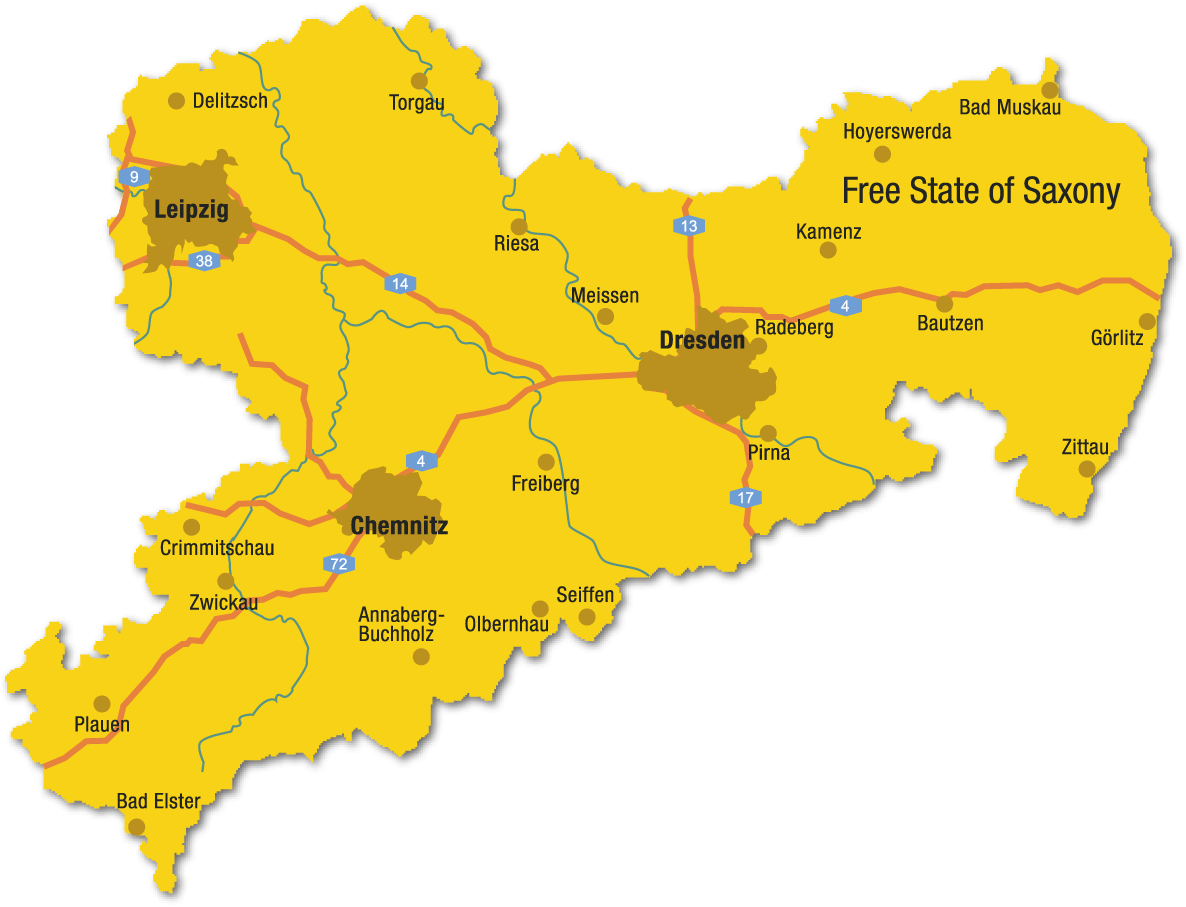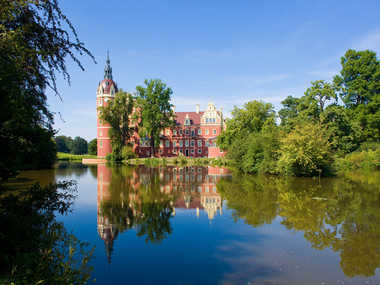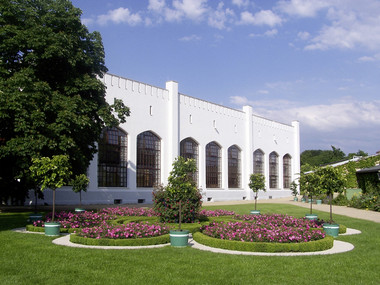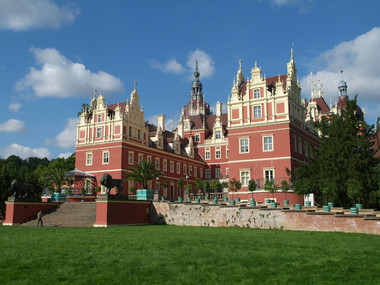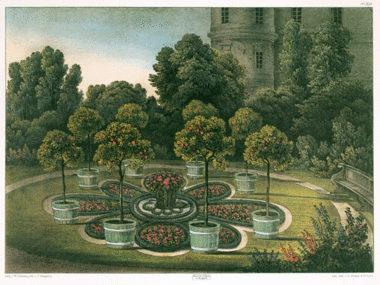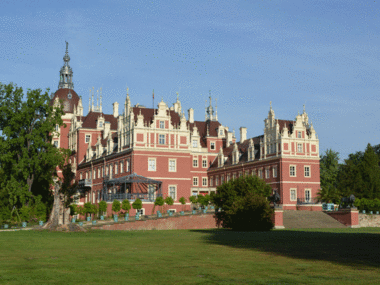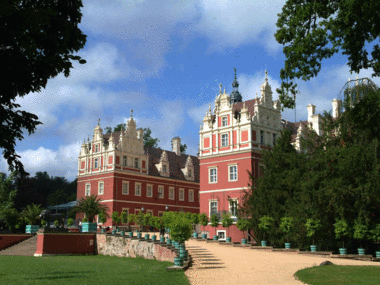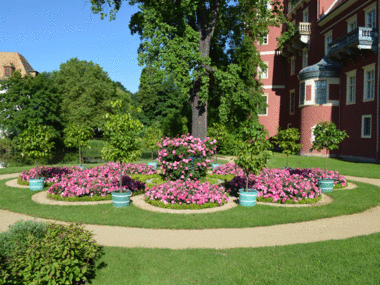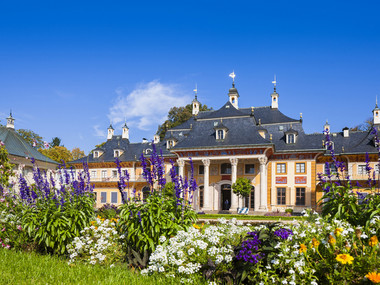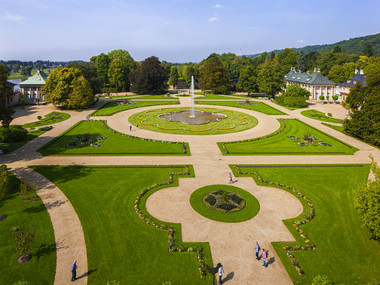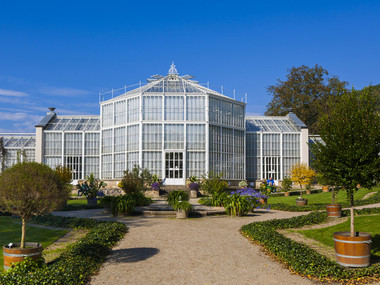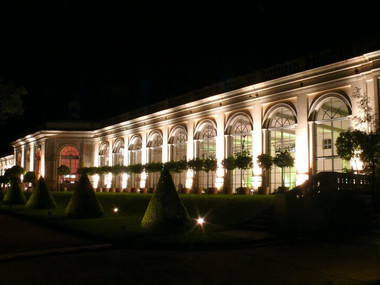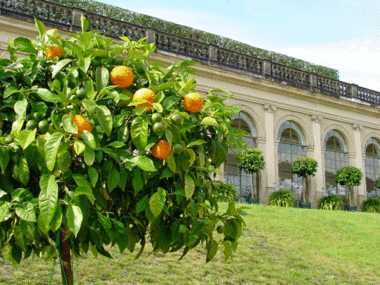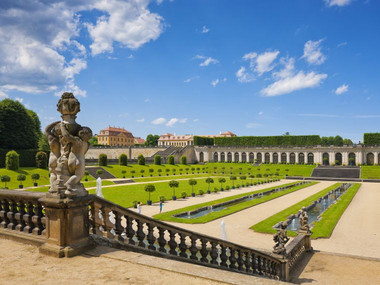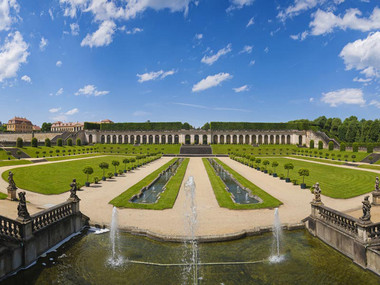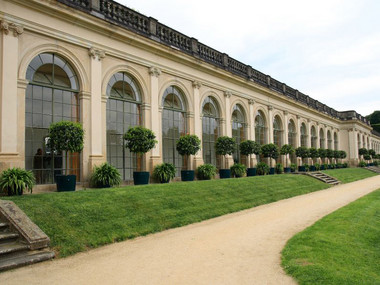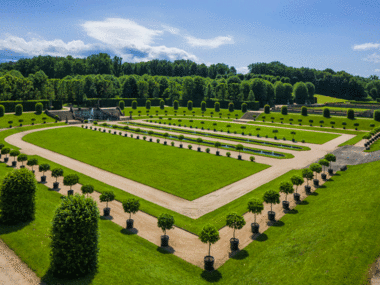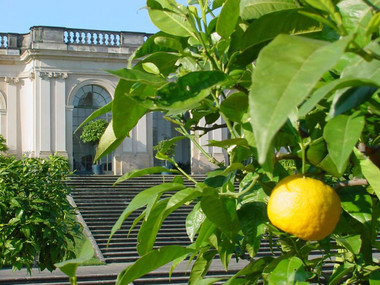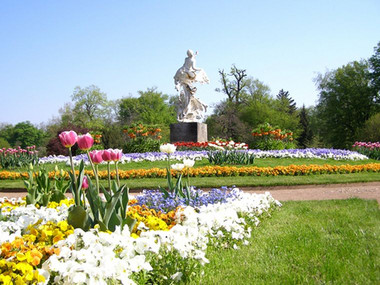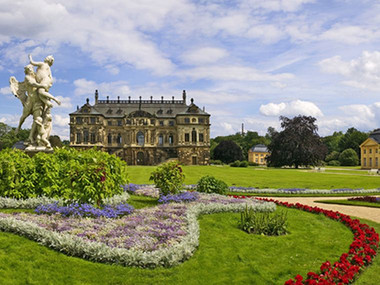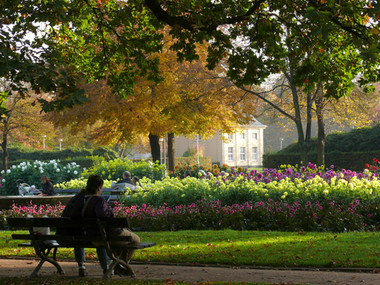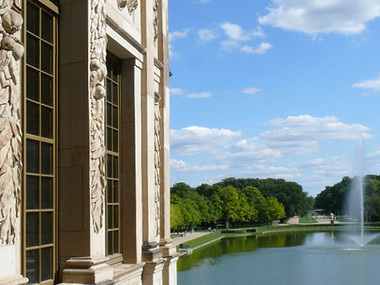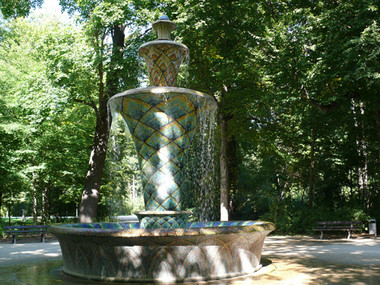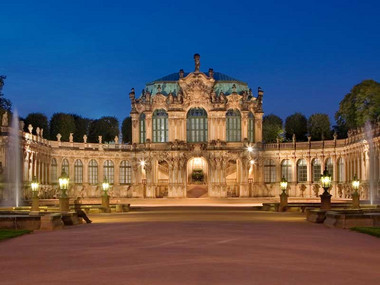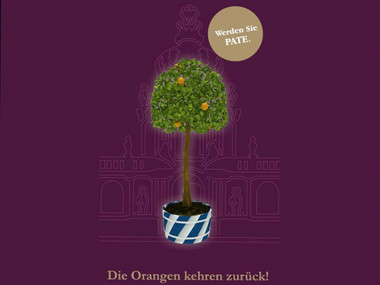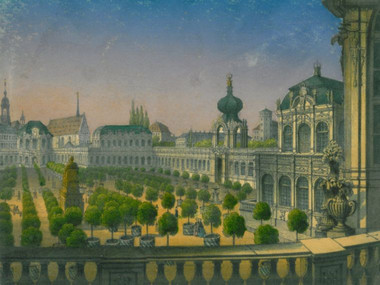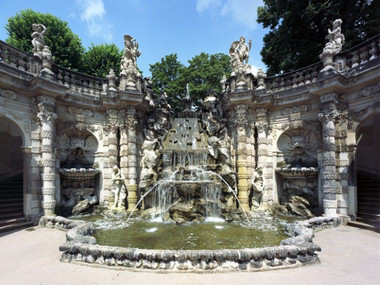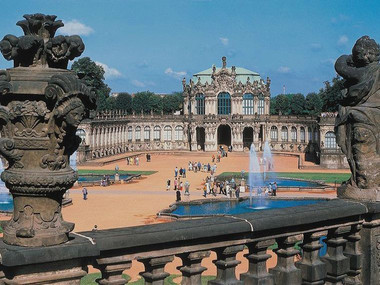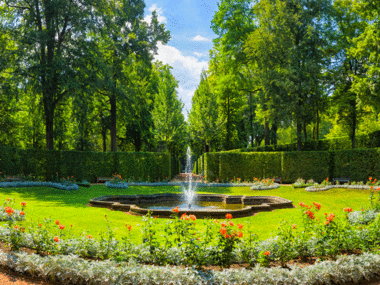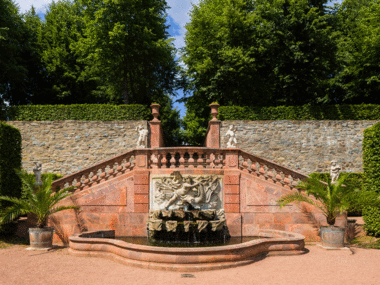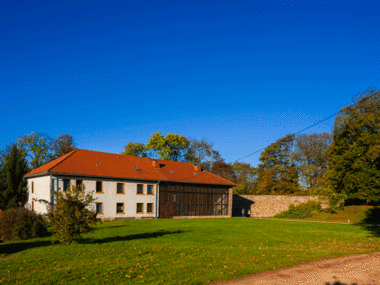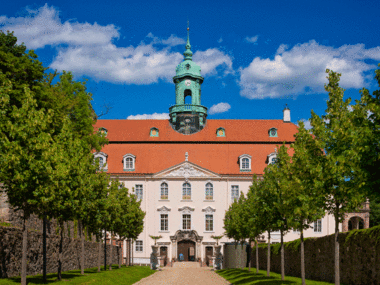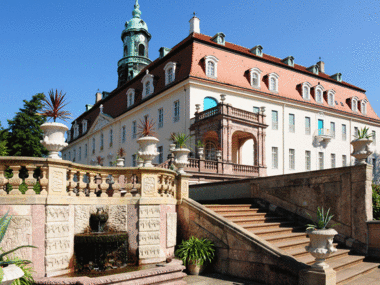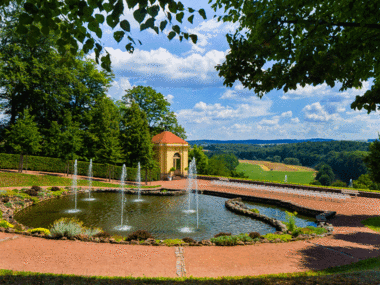Schloesserland Sachsen in »orange fever« - Be invited to a tour of discovery through the world of the bitter orange and orange culture in our gardens of kings.
A lovely fruity scent wafts through the gardens of Saxony. Especially the nobility knew to appreciate the sweet temptation of the evergreen orange trees. As early as in the 11th century, the orange was introduced in Europe. It was regarded the fruit of eternal youth. Augustus the Strong brought it to Saxony at the beginning of the 18th century. His passion for this citrus plant started the culture of orangeries in Dresden. The Elector owned more than 4,000 orange trees. Follow us in the traces of the orange trees that, even in the times of the Baroque, had to cover long distances and have since then enchanted our guests with their exotic nature.
Prince Pueckler Park Bad Muskau (A)
The original orangery had been torn down by Prince Pueckler twice, before it found its perfect place where it is still today. It is not used as an orangery for overwintering the citrus plant stock anymore. After 1945, it mainly served as a youth hostel. Today, the orangery is available during the summer months for numerous events.
After your visit of the orangery and of the exhibition in the New Palace, you should also try the world-famous Prince Pueckler Icecream at the café.
Further details on Prince Pueckler Park Bad Muskau.
Continue to Station B – Pillnitz Palace and Park, approx. 117 km
Pillnitz Palace and Park (B)
The citrus fruit was mentioned for the first time at Pillnitz Palace and Park in 1609. They unfolded their true splendor in the Pillnitz Park in 1725 with the erection of the Jousting Building by Matthaeus Daniel Poeppelmann. 1,031 orange plants spread their sweet and fruity scent there in 1760. In 1880, the building was extended by two wings. Unto our day, the space of 930 m² has served as winter quarters for the total of 450 potted plants from the Palace Park. The origin of the trees can only be guessed. Due to the havoc of the two World Wars, many of the orange stock were scattered all over Saxony. Little by little, they returned to Pillnitz again. There is certainty only about six of the citrus plants that they originate from the Dresden Zwinger stock. Among them – the oldest citrus plant in Central Europe that has grown in a pot, a 300-year-old bitter orange.
You cannot get enough of the park estate? Just stay for the night! You can find various opportunities of staying overnight at the Dresden Pillnitz Palace Hotel or in the holiday homes amidst the park.
Further details on Pillnitz Palace and Park.
Continue to Station C – Grosssedlitz Baroque Garden, approx. 14 km
Grosssedlitz Baroque Garden (C)
One of the largest collections of bitter oranges in the german-speaking region is situated at the Grosssedlitz Baroque Garden. 130 bitter oranges and 300 more orange plants can be admired in the garden estate. In extensive restoration works of the orangeries, 100 citrus trees could be brought from Tuscany in 1997 again. In summer, they adorn the garden just as they did at the times of Augustus the Strong. Visitors of the park can buy from a limited supply of home-made bitter-orange marmalade.
The Saxon Citrus Days are held every year in May at Grosssedlitz Baroque Garden. Visit the flowering park estate and learn much about the exotic plants.
The orange trees are currently being cultivated and tended for the Dresden Zwinger by an ‘orangeur’ and prepared for their relocation to Dresden.
More information about the return of the oranges.
Further Details on Grosssedlitz Baroque Garden.
Continue to Station D – The Grand Garden of Dresden, approx. 14 km
The Grand Garden of Dresden (D)
In 1683, Johann Friedrich Karcher had the Grand Garden redesigned. Apart from playground areas, a maze, and one of Europe’s first natural theater stages, an orangery was built, too. By instruction of Augustus the Strong, parts of the orange-tree stock from the ‘Herzogin Garten‘ (The Duchess’ Garden) were to be relocated to the Grand Garden of Dresden. In front of the Palace, they radiated their beguiling fragrance to the entire town and served as a status symbol on occasion of the numerous court festivities in the Baroque pleasure garden. Nothing can be seen of the orangery today anymore. But the Palace, one of the earliest Baroque buildings in Dresden, invites visitors to special exhibitions and events.
Further Details on the Grand Garden of Dresden.
Continue to Station E – The Dresden Zwinger, approx. 3.7 km
The Dresden Zwinger (E)
In the 18th century, citrus plants were expensive and rare and, therefore, a symbol of power and wealth. Augustus the Strong had them especially imported from Italy. But where to keep all this splendor in winter? For that purpose, the Elector commissioned his architect Matthaeus Daniel Poeppelmann in 1709 to build an orangery, today’s Zwinger. By and by, numerous extensions developed the building into a Baroque courtyard. The orangery fell into oblivion for the multitude of other cultural offers. The remaining citrus stock found a new home at Pillnitz Palace and Park and Grossssedlitz Baroque Garden.
By May 19, 2017, the orange trees have returned. For that purpose, 80 citrus plants have been imported from Italy and are waiting at Grosssedlitz Baroque Garden for their great return to the Dresden Zwinger.
Further Details on the Dresden Zwinger.
Continue to F – Lichtenwalde Castle & Park, approx. 70.5 km
Lichtenwalde Castle and Park (F)
The orangery at the Lichtenwalde Castle and Park is surrounded by a ten-hectare garden estate. The park is enchanting for its 100 water wells and 400 fountains. In 2005, the park estate was nominated one of the most beautiful of its kind in Germany. The orangery served originally as a facility for overwintering the cold-sensitive citrus plants. Numerous events and concerts are stage there today. The park’s sloped location is of special charm that allows surprising views of the Zschopau River valley.
Further Details on Lichtenwalde Castle and Park.
